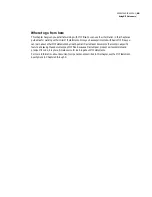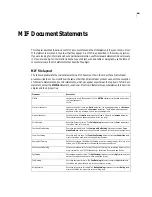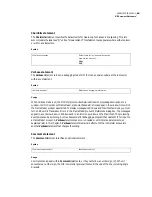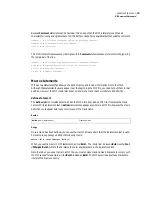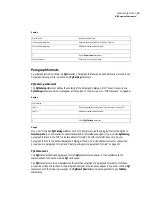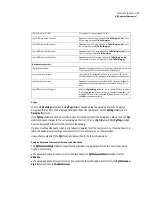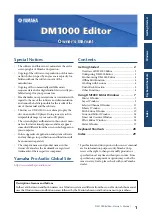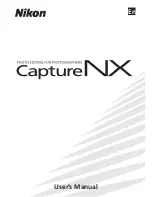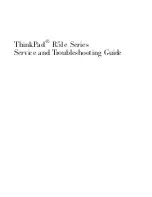
62
ADOBE FRAMEMAKER 6.0
Using MIF Statements
Minimizing MIF statements
The following tips may help you minimize the number of MIF statements that your filter needs to generate:
•
If you are not concerned about controlling the format of a document, use the default formats that a
FrameMaker product provides for new documents. The user can always change formats as needed within
the FrameMaker document.
•
If you are filtering a document from another application into a FrameMaker product and then back to
the application, you may want to import the filter’s MIF file into a FrameMaker document, save the
document as a MIF file, and then convert the file back to the original format from the MIF file generated
by the FrameMaker product. This technique takes advantage of a FrameMaker product’s syntactically
complete MIF statements, but allows your filter to write a shorter MIF file.
•
If your filter needs to generate fully-formatted MIF files, you can minimize the number of formatting
statements by creating a template in a FrameMaker product, saving the template as a MIF file, and then
including the MIF template file in your filter’s generated document. You must edit the saved MIF template
(see “Including template files” on page 55). An advantage of this technique is that you can use the same
template for more than one document.
•
Define macros to ease the process of generating statements. For an example of using macros, see “Text
example” on page 233.
Database publishing
You can use MIF files to import information from an external application, such as a database, into a
FrameMaker document. This type of information transfer is often called database publishing. For example,
you can write a C program or a database script to retrieve information from a database and store that infor-
mation as a MIF file. A user can then open or import the MIF file to get a fully formatted FrameMaker
document that contains up-to-date information from the database.
There are four key elements to a typical database publishing solution:
•
The database provides a system to enter, manipulate, select, and sort data. You can use any database that
can create text-based output files.
•
MIF provides the data interchange format between the database and a FrameMaker product. MIF can
completely describe a document in ASCII format, including information such as text and graphics, page
layout, and indexes and cross-references.
•
A FrameMaker product provides the text formatting. The FrameMaker product reads MIF files and
dynamically manages line breaks, page breaks, headers and footers, and graphics. The user can view, print,
save, or even navigate through an online document using hypertext commands.
If you plan to use a FrameMaker product to view MIF files, use FrameViewer. You cannot use FrameReader to
view MIF files because FrameReader cannot read MIF.
Содержание FRAMEMAKER 6.0
Страница 1: ...MIF Reference Online Manual FrameMaker 6 0 Adobe ...
Страница 15: ...15 ADOBE FRAMEMAKER 6 0 Introduction ...
Страница 142: ...142 ADOBE FRAMEMAKER 6 0 MIF Document Statements update the text inset when changes are made to the original file ...
Страница 159: ...159 ADOBE FRAMEMAKER 6 0 MIF Book File Statements ...
Страница 232: ...232 ADOBE FRAMEMAKER 6 0 MIF Asian Text Processing Statements ...
Страница 252: ...252 ADOBE FRAMEMAKER 6 0 Examples ...
Страница 268: ...268 ADOBE FRAMEMAKER 6 0 MIF Compatibility ...


















